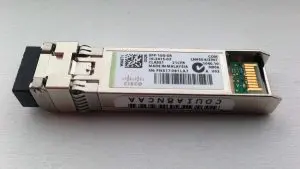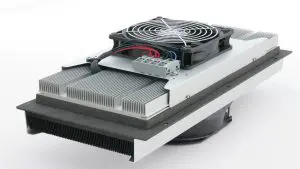Webinar Series - Requirements for International Approval Product Safety: Thermal Measurements November 8, 2016 1 - 2 PM Online The webinar series will present details on test and evaluation methods for the more common tests required for international approval. The discussion will address test and evaluation methods along with approaches to incorporate safety control … [Read more...]
Pluggable Optics Modules – Thermal Specifications: Part 2
By Terence Graham and Bonnie Mack, Ciena Corporation Introduction In Part 1 of this article [1] the overall thermal environment for pluggable optical modules (POMs) was described, with the effect of both out of flatness and source locations relative to heatsink contact area also examined. The article also introduced the relevant sections of the multi-source agreements … [Read more...]
First Thermoelectric Air Conditioner with Universal Input
A unique feature is included in TECA’s newest enclosure cooler series. The AHP-2259 Series of thermoelectric air conditioners will automatically accept 90 to 264 VRMS input. There are no adjustments to be made by the end user, the AHP-2259 coolers have a universal input power supply. This allows for increased versatility of use. The coolers can meet a wide range of input … [Read more...]
Thermoelectric Assembly Cooling for Temperature Control in CO2 Incubators
Laird has developed a smaller, more efficient option for precise thermal management in compact CO2 incubators using thermoelectric assemblies (TEAs). When employed with the advanced SR-54 temperature controller, thermoelectric assemblies use less energy to maintain the desired temperature range. A cell culture incubator is designed to maintain a constant temperature and high … [Read more...]
Stainless Steel Heat Exchangers Highlighted at Upcoming Expo
Thermacore, Inc. will present its innovative stainless steel heat exchanger product offering at Pack Expo International on November 6-9 in booth E-7440 at McCormick Place in Chicago, Illinois. The standard material choice for heat exchangers used in food and beverage, medical equipment, and pharmaceutical industries is stainless steel. Corrosion-resistant stainless steel … [Read more...]
- « Previous Page
- 1
- …
- 45
- 46
- 47
- 48
- 49
- …
- 340
- Next Page »









